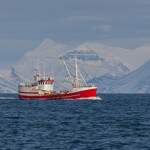Toyosu bluefin tuna auction hits new record price
Kiyoshi Kimura, president of restaurant chain Sushi Zanmai, has shelled out big bucks again to get his company’s name in the news worldwide.
Kimura made the winning bid for the highest-priced Pacific bluefin tuna at the first tuna auction of the year at Tokyo’s new Toyosu Market on 5 January.
The chain is overshadowed in size by rival conveyor-belt sushi chains Hamazushi (more than 400 outlets), Akindo Sushiro (more than 500 outlets; tied-up with Genki Sushi, which has 319 outlets, in 2017), Kura Sushi (429 outlets) and Kappa Sushi (399 outlets). Sushi Zanmai, owned by Tokyo-based Kiyomura Corp. has just 57 outlets. But it has become a well-known brand, as Kimura has taken the top tuna for seven out of the last eight years.
In 2013, a single fish sold for an all-time high of JPY 155.4 million (USD 1.4 million, EUR 1.2 million). Last year’s top tuna sold for a much lower JPY 72 million (USD 663,000, EUR 582,000), as other bidders recognized that Kimura would take the fish whatever their bid. But this year he paid through the nose: JPY 333 million (USD 3 million, EUR 2.6 million).
In interviews, Kimura said he regretted paying such a high price. Indeed, it is the costliest tuna ever bought. The 278-kilogram fish from Oma, Aomori Prefecture, cost JPY 1.2 million (USD 11,060, EUR 9,700) per kilogram – a rate with no relation to the prices that the chain charges in its shops: One nigiri sushi of Pacific bluefin tuna is listed on the menu at JPY 158 (USD 1.46, EUR 1.28). The shop will naturally take a huge loss on the sales, and the purchase is more akin to a U.S. company airing a television commercial during the Super Bowl than to purchasing food ingredients.
The first auction of the year is claimed to be an indicator of the economy for the coming year, though advertising luxury items (snow crab, for example) at outrageous prices is a commonly-used method in Japan to build product image.
As usual, conservation groups such as The Pew Charitable Trusts took the opportunity to point out the low stocks of the species.
“The celebration surrounding the annual Pacific bluefin auction hides how deeply in trouble this species really is. Its population has fallen to less than 3.5 percent of its historic size and overfishing still continues today,” Jamie Gibbon, an associate manager for The Pew Charitable Trusts’ global tuna conservation campaign, said in a press release. “It’s time for countries, including Japan, to support Pacific bluefin recovery, fund the necessary science, and commit to enforcing fishing limits, to ensure that there will still be bluefin left to auction.”
The International Union for Conservation of Nature lists the Atlantic bluefin tuna (Thunnus thynnus) as “endangered” on its “Red List” and the Southern bluefin tuna (Thunnus maccoyii) as “critically endangered,” but the Pacific bluefin tuna (Thunnus orientalis) is somewhat better off, being listed as “vulnerable.”
In recent years, closed-cycle breeding of Pacific bluefin tuna has been ramping up to commercial scale. This may take pressure off wild stocks, but may also remove a sense of urgency about protecting them.
Photo courtesy of Sushi Zanmai






Share